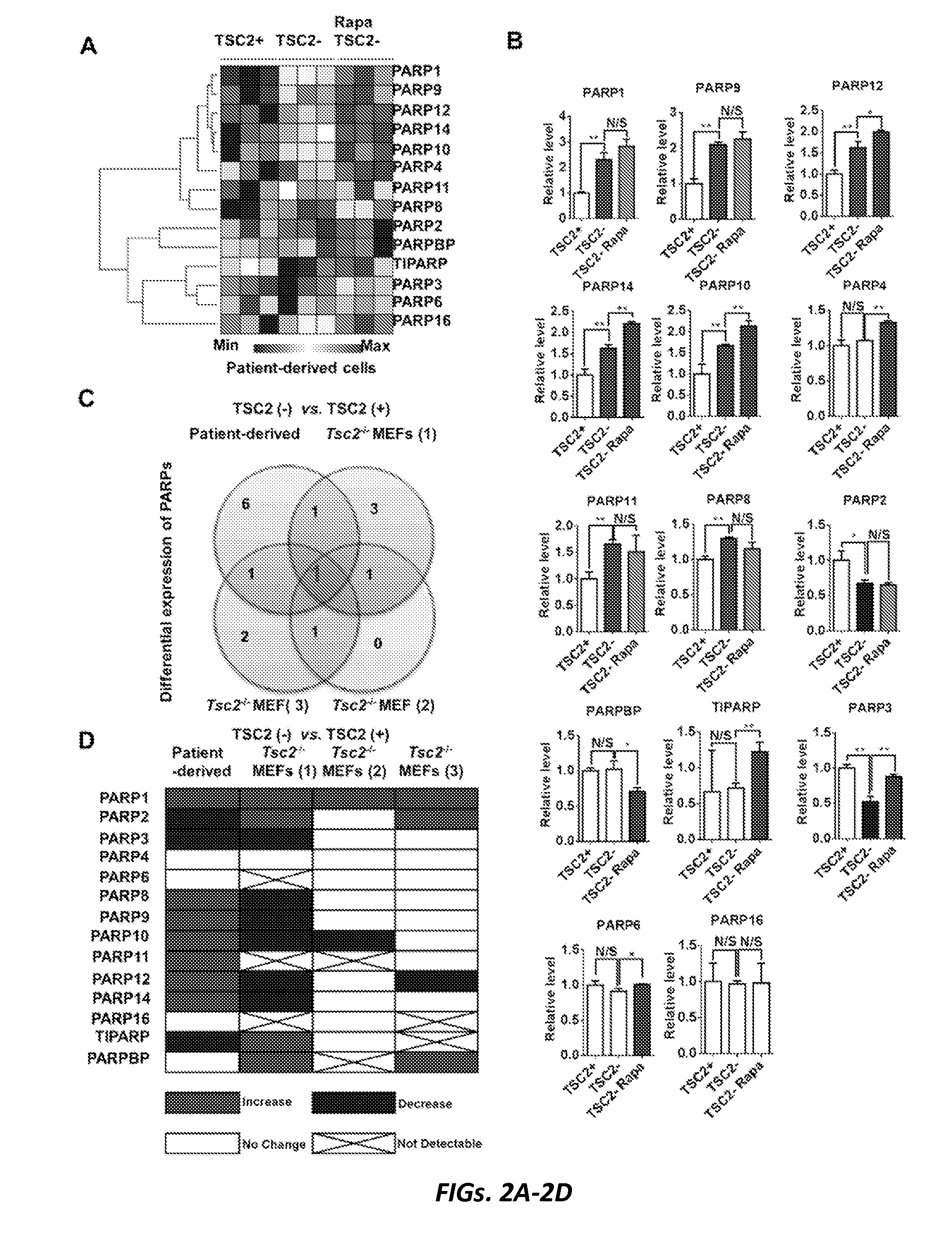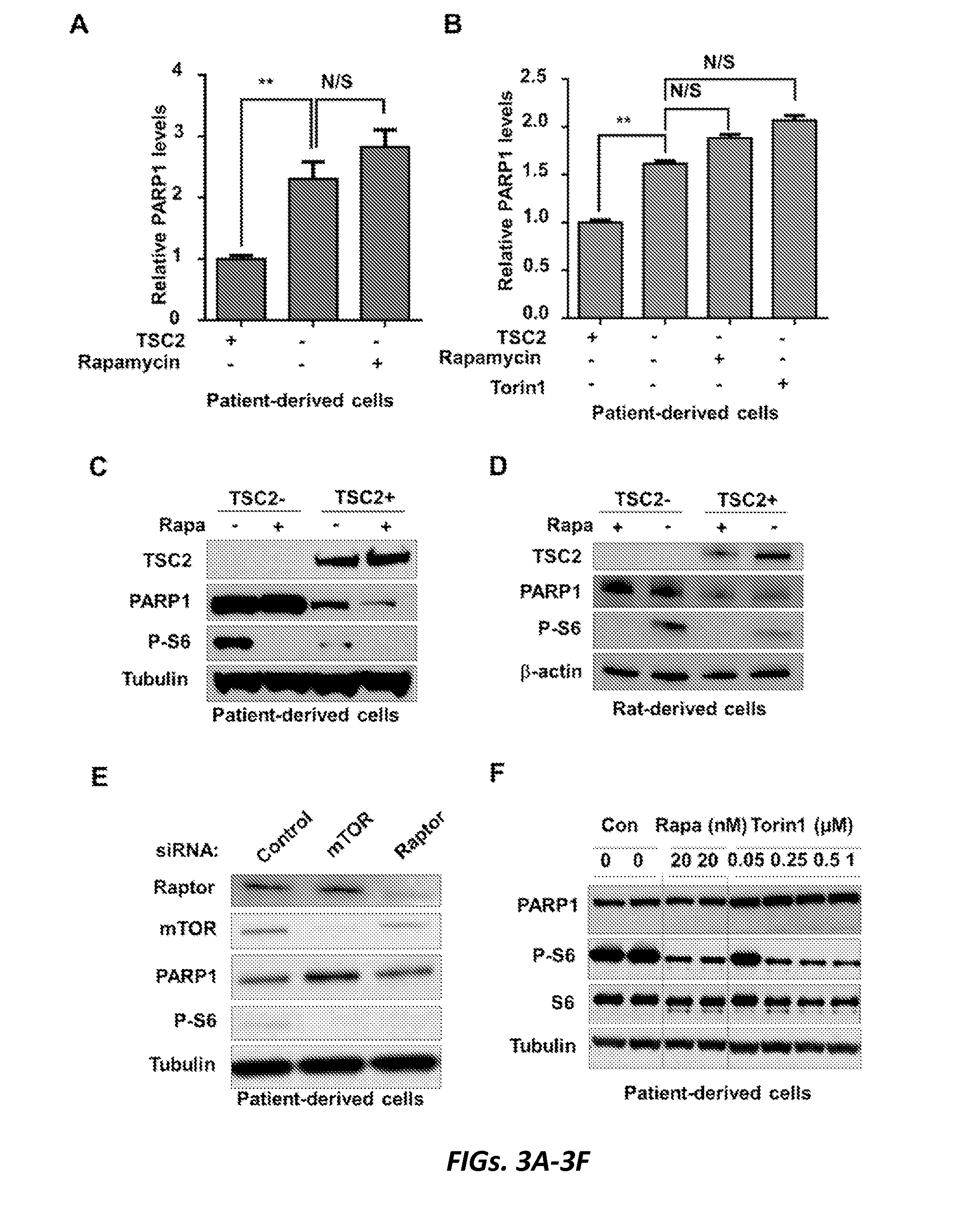Targeting parp1 for treatment of tsc and cancers
a parp1 and cancer technology, applied in the direction of enzymology, peptide/protein ingredients, transferases, etc., can solve the problem of mtorc1 hyperactivation
- Summary
- Abstract
- Description
- Claims
- Application Information
AI Technical Summary
Benefits of technology
Problems solved by technology
Method used
Image
Examples
example 1
Rapamycin-Resistant PARP1 Overexpression is a Therapeutic Target in Lymphangioleiomyomatosis (LAM)
[0110]The protein products of the TSC1 and TSC2 genes, hamartin and tuberin respectively, interact with TBC1 domain family member 7 (TBC1D7) (11) to form a complex (12) which regulates the state of activation of the mammalian target of Rapamycin complex 1 (mTORC1) (13). Mutation and loss of either gene leads to mTORC1 activation, which has been observed in LAM-derived cells and LAM nodules (4, 14-17). However, TSC2-deficient cells derived from a LAM patient have multiple expression characteristics that are independent of mTORC1 activation (18). We considered the possibility that some of these proteins may contribute significantly to LAM pathogenesis and represent potential therapeutic targets in LAM / TSC-related diseases.
[0111]PARP1, the founding and the most studied member of PARP family proteins, is a large abundant nuclear protein activated by DNA damage, which plays a role in chromos...
PUM
 Login to View More
Login to View More Abstract
Description
Claims
Application Information
 Login to View More
Login to View More - R&D
- Intellectual Property
- Life Sciences
- Materials
- Tech Scout
- Unparalleled Data Quality
- Higher Quality Content
- 60% Fewer Hallucinations
Browse by: Latest US Patents, China's latest patents, Technical Efficacy Thesaurus, Application Domain, Technology Topic, Popular Technical Reports.
© 2025 PatSnap. All rights reserved.Legal|Privacy policy|Modern Slavery Act Transparency Statement|Sitemap|About US| Contact US: help@patsnap.com



